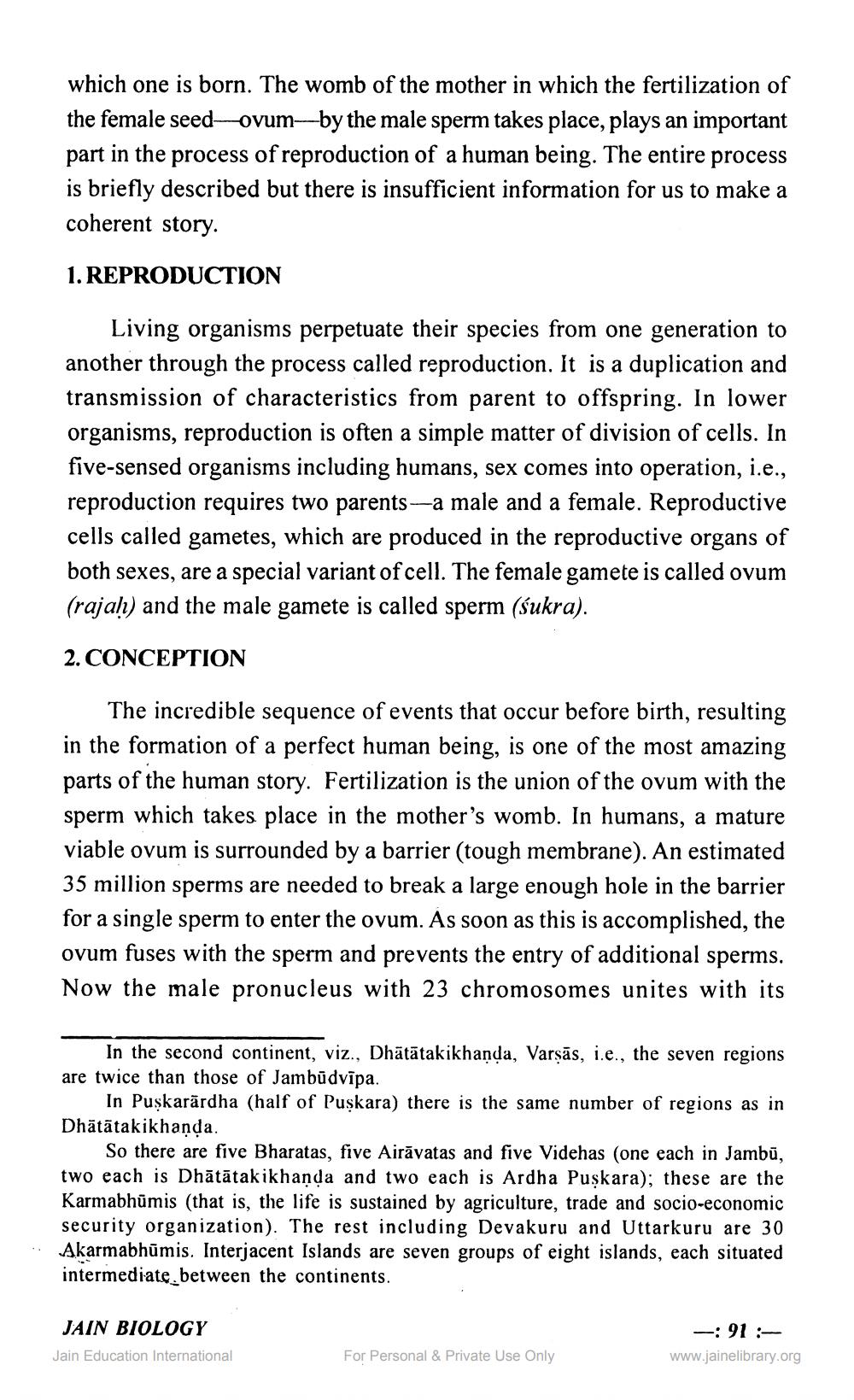________________
which one is born. The womb of the mother in which the fertilization of the female seed-ovum—by the male sperm takes place, plays an important part in the process of reproduction of a human being. The entire process is briefly described but there is insufficient information for us to make a coherent story.
1. REPRODUCTION
Living organisms perpetuate their species from one generation to another through the process called reproduction. It is a duplication and transmission of characteristics from parent to offspring. In lower organisms, reproduction is often a simple matter of division of cells. In five-sensed organisms including humans, sex comes into operation, i.e., reproduction requires two parents--a male and a female. Reproductive cells called gametes, which are produced in the reproductive organs of both sexes, are a special variant of cell. The female gamete is called ovum (rajah) and the male gamete is called sperm (śukra).
2. CONCEPTION
The incredible sequence of events that occur before birth, resulting in the formation of a perfect human being, is one of the most amazing parts of the human story. Fertilization is the union of the ovum with the sperm which takes place in the mother's womb. In humans, a mature viable ovum is surrounded by a barrier (tough membrane). An estimated 35 million sperms are needed to break a large enough hole in the barrier for a single sperm to enter the ovum. As soon as this is accomplished, the ovum fuses with the sperm and prevents the entry of additional sperms. Now the male pronucleus with 23 chromosomes unites with its
In the second continent, viz., Dhätātakikhanda, Varsās, i.e., the seven regions are twice than those of Jambūdvīpa.
In Puskarārdha (half of Puskara) there is the same number of regions as in Dhātātakikhanda.
So there are five Bharatas, five Airāvatas and five Videhas (one each in Jambu, two each is Dhātātakikhanda and two each is Ardha Puskara); these are the Karmabhūmis (that is, the life is sustained by agriculture, trade and socio-economic security organization). The rest including Devakuru and Uttarkuru are 30 Akarmabhūmis. Interjacent Islands are seven groups of eight islands, each situated intermediate between the continents.
JAIN BIOLOGY Jain Education International
-:91:www.jainelibrary.org
For Personal & Private Use Only




